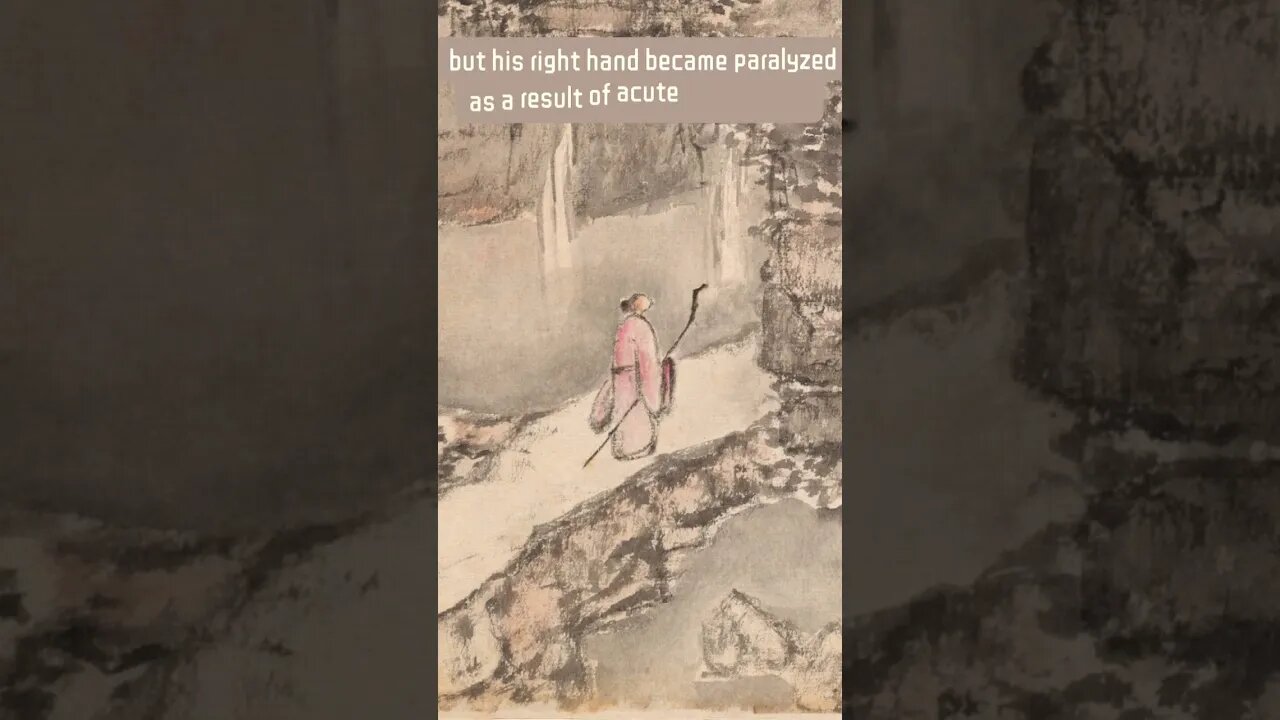Premium Only Content

Exploring Silk Art Vintage Chinese Landscapes and Calligraphy
Exploring silk art in vintage chinese landscapes landscapes and calligraphy by Gao Fenghan who was a petty bureaucrat in Anhui Province for about a decade after passing the local-level civil-service examination in 1727. Then, in 1737, Gao not only lost his government position, but his right hand became paralyzed as a result of acute rheumatism.
👀👉✨ Join in here and get access to premieres, free gifts and more https://t.ly/A1NR
He came to appreciate the crude awkwardness of his left-handed brushwork, which he had been unable to achieve with his right hand, after painstakingly training himself to write and paint with his left hand. He moved to a Buddhist monastery in Yangzhou to support himself through his painting, where he became close friends with the inventive collection of artists known as the Eight Eccentrics of Yangzhou. He left Yangzhou in 1741 to return to his hometown in Shandong Province.
Silk art, also known as silk painting or silk dyeing, is a type of traditional Chinese and Japanese art that involves the use of dyes applied to silk fabrics to create colorful, intricate designs. The dyes are applied to the fabric using a brush or other tools, and the fabric is often stretched taut on a frame to prevent wrinkles and ensure a smooth surface for painting.
Silk art can take many forms, including traditional Chinese painting, which is characterized by bold brushstrokes and a limited color palette, as well as more modern, Western-influenced styles. The most popular themes in silk art include nature scenes, landscapes, and portraits, as well as objects such as an old fashioned scale abstract designs.
Gao Fenghan Vintage Chinese Silk Art Depicting Landscapes and Calligraphy
Gao Fenghan was a petty bureaucrat in Anhui Province for about a decade after passing the local-level civil-service examination in 1727. Then, in 1737, Gao not only lost his government position, but his right hand became paralyzed as a result of acute rheumatism. He came to appreciate the crude awkwardness of his left-handed brushwork, which he had been unable to achieve with his right hand, after painstakingly training himself to write and paint with his left hand. He moved to a Buddhist monastery in Yangzhou to support himself through his painting, where he became close friends with the inventive collection of artists known as the Eight Eccentrics of Yangzhou. He left Yangzhou in 1741 to return to his hometown in Shandong Province.
#archchinese #antique #silkart #exploringart #vintage #vintageart #chinese #chineselandscapes #chinesessilkart #calligraphy
-
 LIVE
LIVE
Sgtfinesse
2 hours agoSarge's 1st Stream on Rumble
357 watching -
 58:23
58:23
The Dan Bongino Show
4 hours agoDemocrats Enter Full Panic Mode (Ep. 2378) - 11/26/2024
583K1.25K -
 58:04
58:04
The Rubin Report
3 hours agoCNN Host Gets Visibly Angry as Her Trap for Conservative Backfires in Her Face
47.9K52 -
 1:28:35
1:28:35
Benny Johnson
2 hours ago🚨VICTORY: All Charges Against Trump DROPPED, Time For REVENGE | Mexico, Canada Bend Knee To Trump
64.1K54 -
 2:17:41
2:17:41
Steven Crowder
4 hours agoTired of Winning Yet? Jack Smith Drops Trump Charges and Mexico Bends The Knee!
365K192 -
 2:00:50
2:00:50
LFA TV
15 hours agoNATIONAL SECURITY THREAT! | LIVE FROM AMERICA 11.26.24 11am EST
38.8K18 -
 1:19:04
1:19:04
Graham Allen
5 hours agoPANIC‼️ Biden Is Giving NUKES To Ukraine! + Jack Smith DISMISSED Cases Against Trump!
116K75 -
 1:40:00
1:40:00
PMG
14 hours ago $2.17 earned"WHAT?! Trump & the Fed are DISMANTLING the Global Banking Cartel!? w/ Tom Luongo"
25.4K3 -
 2:32:28
2:32:28
Matt Kohrs
14 hours agoBitcoin Falters, Degen Psychology & Breaking News || The MK Show
57.9K4 -
 38:23
38:23
BonginoReport
7 hours agoJack Smith Belongs Behind Bars (Ep.93) - 11/26/24
98.3K182